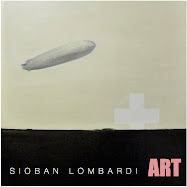
Mr. Ray states that he wants to, “assist you in everything from setting and achieving your goals to building the million-dollar lifestyle you deserve.” I am a stickler for credentials and was curious about Mr. Ray’s other-than-Oprah qualifications. I learned that in addition to studying Business and Human Behavior in college he had read extensively in History and Psychology. Prior to establishing to his personal development career, Mr. Ray was a sales manager for AT&T where he was commended for five consecutive years. In addition he was commissioned for the establishment and management of a telemarketing venture at AT&T. He received honors for this role.
Somewhere along the line, Mr. Ray missed the flashcard demonstrating “material” as the antonym for “spiritual.” While I mourn the tragic and senseless loss, I wonder what its is about our culture that makes us willing to pay $10,000 to a telecommunications salesman to attain spiritual growth?
Granted, I am a skeptic. I would gladly forgo bedside manner in exchange for a degree from Johns Hopkins any day of the week. But I also believe in God and find revolting those hucksters and charlatans who use the ubiquitous catchall of “spirituality” to profit from and consecrate our own insatiable desire for more. Native American groups, deeply saddened by the recent tragedy are also incensed, citing the lack of respect and the ignorance demonstrated when self-proclaimed experts appropriate tribal traditions that are specific in protocol and complexity.
The result of a quest for spiritual growth can produce a variety of outcomes. Last week I went to the Kandinsky retrospective at the Guggenheim. His practice was a dedicated search for a higher consciousness. It was grounded in the emotional and visceral responses that result from the interplay of color, form and geometry. He opened up abstraction. His prodigious project presaged, informed and enhanced the aesthetic practice and experience of others for decades. It continues to do so.
As a person who once woke each day wanting to die, I have found that, with the exception of Paris, the most satisfaction comes from those endeavors that don’t necessarily cost $10,000 and don’t qualify themselves with guarantees. My own satisfaction and growth has resulted from:
The search: hard work consistently practiced over a long period of time - it’s an inside job
The credentials: The advice and counsel of one more educated and experienced than myself. Remaining willing to accept their point of view, criticism and support
The giving: developing my own credentials that I can share only when invited (this is really hard)
The messiness: The living of life with all of its love, pain, joy and vulnerability (this is also very hard)
Finally
The NO: Not getting everything I want, and not always getting to know the reason why
My friend Cindy has repeatedly said, “What you came here looking for, you came here with.” I believe this but I doubt that this would get any play on Oprah. Perhaps I should talk to that Shaman wearing the sandwich board. He’s outside the donut shop on 14th & 3rd.





